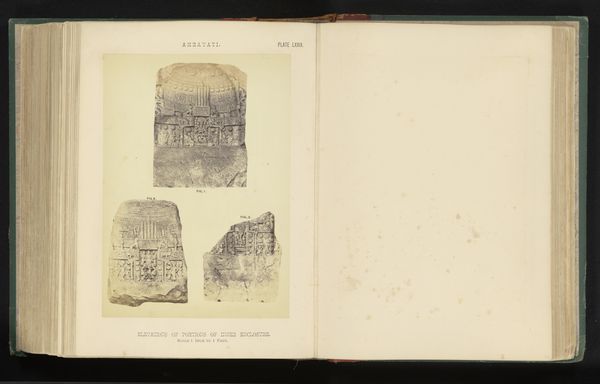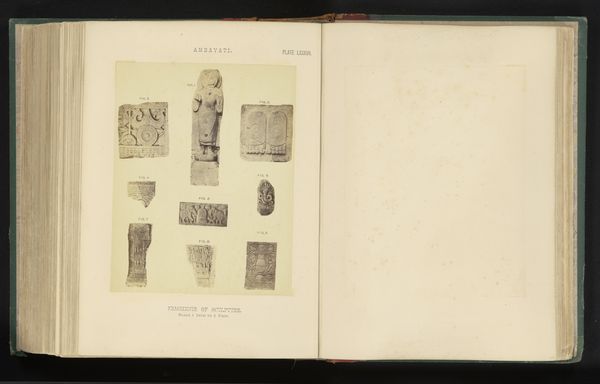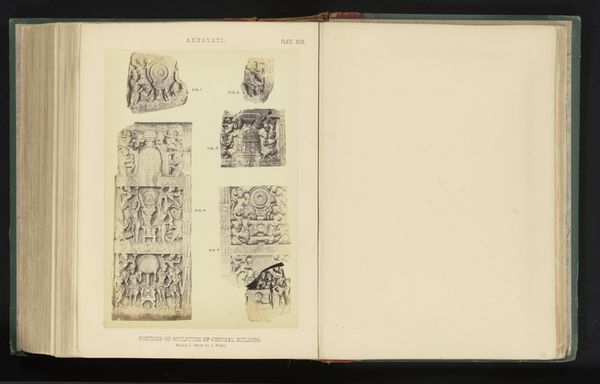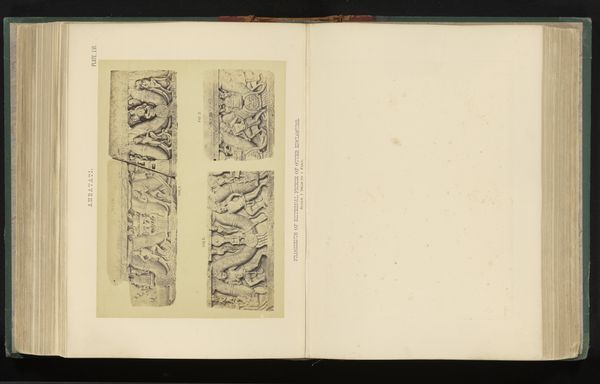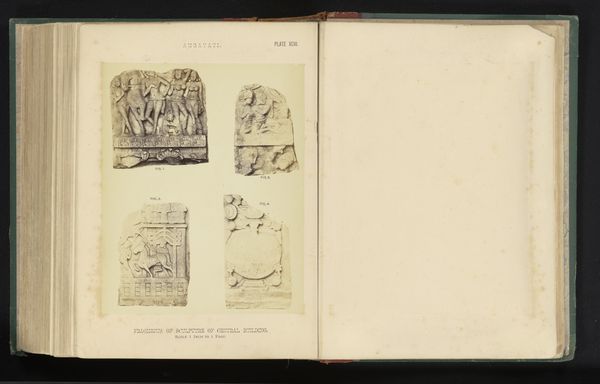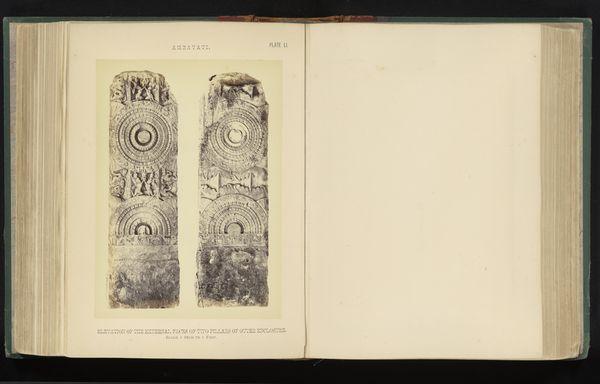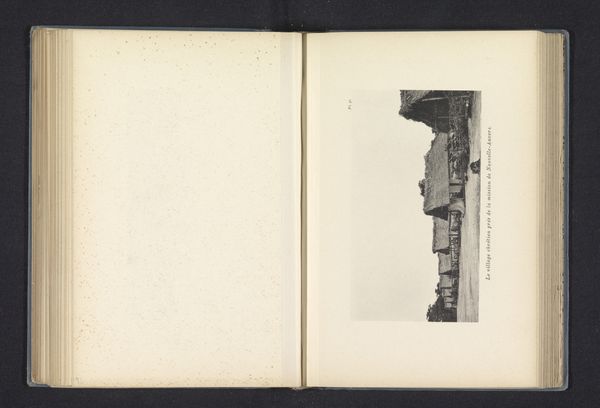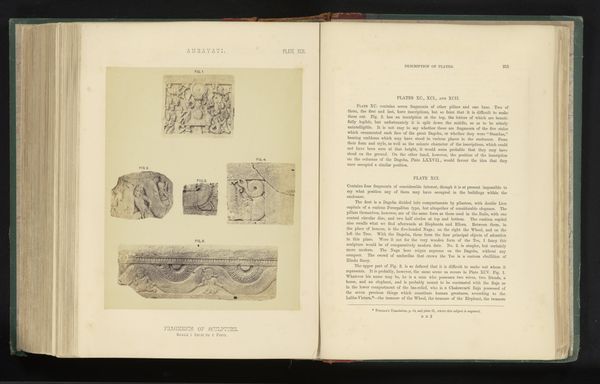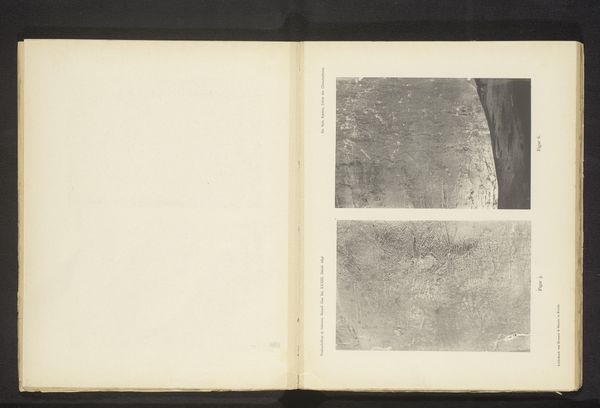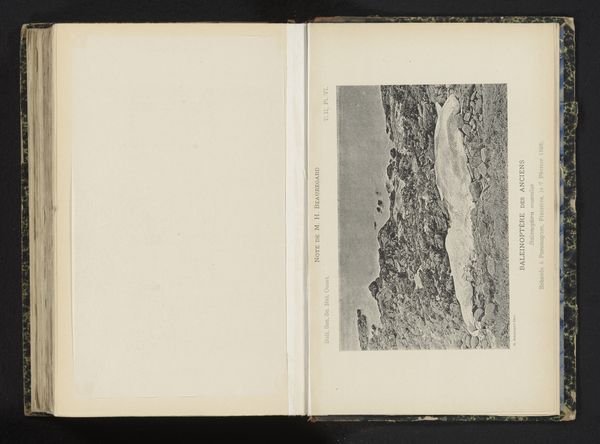
print, sculpture, engraving
# print
#
ancient-mediterranean
#
sculpture
#
engraving
Dimensions: height 262 mm, width 182 mm
Copyright: Rijks Museum: Open Domain
Curator: William H. Griggs’ “Vier fragmenten van sculpturen,” which translates to “Four Fragments of Sculptures,” was created before 1868 and depicts various sculpted segments via print and engraving. What strikes you most immediately about this compilation? Editor: The texture. Even in print, the depicted reliefs radiate an incredible tactile quality, from the chipped edges to the implied depth of the carvings. The overall effect is, despite the fragmentations, a feeling of solidity and age. Curator: Absolutely. Let's consider the symbols within the lower reliefs. The repeated human figures—some seeming to engage in ritual or labor—suggest a society deeply invested in shared experience, doesn't it? Editor: Indeed. Given the period and the visual cues, I read these fragments as potent emblems of cultural memory and possibly even of hierarchical social structures. One almost wonders if we are seeing depictions of ancestors or mythical figures. Curator: Observe, too, the composition itself. Each fragment is presented almost as an isolated study. But Griggs organizes these pieces with a strong awareness of form and space, achieving a surprising visual harmony. Editor: Yes, the composition cleverly juxtaposes what seems secular with what might be religious architecture above it, hinting at a worldview where practical life and belief are interwoven. That dome-like shape is evocative. Curator: I'm particularly interested in how the medium of engraving itself adds a layer of meaning. Griggs isn’t merely documenting these sculptures. He is reinterpreting them, creating something new through the very act of reproduction. Editor: An excellent point. By capturing and disseminating these images, Griggs is essentially granting the ancient sculptures a form of immortality—extending their symbolic reach far beyond their original context. Curator: A truly intriguing work—it demonstrates how the structural layout can enrich our interpretations while revealing the profound nature of ancient imagery. Thank you for shedding further light. Editor: Thank you; it’s a fascinating encounter with our potential shared past through the language of shape, texture, and evocative symbols.
Comments
No comments
Be the first to comment and join the conversation on the ultimate creative platform.
